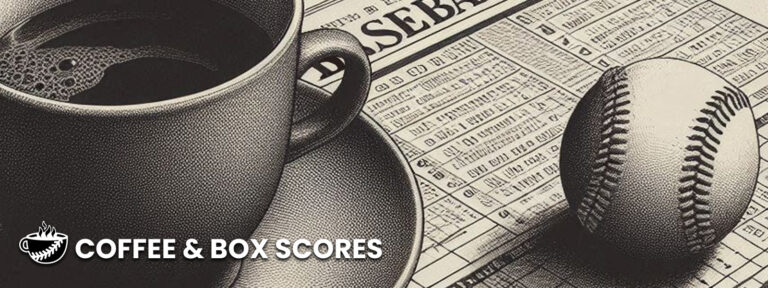In 1998, Texas cleanup hitter Juan González embodied that descriptive amazingly well and often, with eight different games featuring at least five RBI. No other player in the modern era has produced so many big-RBI games, although a few aren’t too far behind. In 1930, Lou Gehrig had seven such efforts – all from the fourth or fifth spot in the Yankees’ order. In 1933, Jimmie Foxx also had seven and also produced all seven from the fourth or fifth spots in the lineup. More than a half century later, in 1998, Manny Ramírez produced seven games with five-plus RBI and generated all of them from the third, fourth or fifth spots. This is what middle of the order batters are supposed to do. Traditionally, second-hole hitters have a different job description, and it shows up in this lens of five-RBI games in the modern era. From that spot, there are five players who’ve produced three, which is the most: Smoky Burgess in 1955; Eddie Mathews in 1959; Dwight Evans in 1984; John Valentin in 1995; and Bobby Witt., Jr. just last year. Thanks to what’s been quite a week for Jackson Chourio, Milwaukee’s sophomore sensation now has a whole lot of space to catch that crowd while doing a spectacular impression of a middle of the order banger.
For the second time in three games, Jackson Chourio drove in five runs. The Brewers’ outfielder:
~Is the 14th player since 1901 to have multiple five (or more) RBI games this early into the season (through 12 team games). He’s the youngest of the entire group, which includes such names as Lou Gehrig, Al Simmons, Jimmie Foxx, Bill Terry and Ted Williams.
~Is one of six players since 1901 to be no older than his age (21 years and 29 days old) and have multiple games in a season in which he drove in at least five runs. Ted Williams had three in 1939. These guys, like Chourio, had two: Ty Cobb (1907), Travis Jackson (1924), Mel Ott (1929), Álex Rodríguez (1996).
~Is tied for the third most RBI through Milwaukee’s first 12 games. Jeromy Burnitz had 18 in 1998 to surpass Rob Deer’s 17 from 1987. The others with 16: Danny Walton (1970), Cecil Cooper (1978) and Ben Oglivie (1982).
Brice Turang had two hits to extend his hitting streak to 12 games, leaving him one shy of matching Dickie Thon (1993) for the longest to start a season in Brewers history.
Jacob Wilson singled for one of two Athletics hits in a 2-1 loss to the Padres. With the work, the shortstop ran his hit streak to 13 games – tied for the sixth longest to start a season in Athletics history. Wilson is matched with Socks Seybold (1901 and 1902), Doc Powers (1902), Sammy Hale (1925), Jerry Lumpe (1960), Carney Lansford (1987), Jermaine Dye (2004) and Ryan Sweeney (2010).
Aside from hitting in all 13 games to open their respective seasons, Wilson and Seybold in 1901 share another streak: in each and every one of their first 13 games of the year, they did not draw a walk. There are seven players since 1901 to have opened their seasons with at least 13 straight games featuring at least one hit and absolutely no free passes.
24 George Sisler (1925)
15 Tony Peña (1990)
13 Socks Seybold (1901), Dickie Thon (1993), Rocco Baldelli (2003), Melky Cabrera (2014), Jacob Wilson (2025)
In the Padres’ win, Xander Bogaerts doubled and singled twice to elevate to 1,707 career hits. For all shortstops (67% of games at SS) through their age-32 seasons, Bogaerts currently sits with the 17th most knocks, now just ahead of Lou Boudreau (1,706). Next, Bogaerts can take aim at Tony Fernández, who collected 1,714.
Aaron Judge drew his 700th career walk in New York’s win against Detroit. For all players ever, through each and everyone’s first 10 seasons, Judge is the 14th to reach 300 longballs and 700 free passes. Let’s organize the 14 into tiers by OPS+ through every player’s first decade:
180-190 OPS+: Ted Williams (190)
170-179 OPS+: Mike Trout (176), Aaron Judge (174), Mickey Mantle (172), Albert Pujols (172)
160-169 OPS+: Frank Thomas (169)
150-159 OPS+: Jeff Bagwell (159), Eddie Mathews (154), Miguel Cabrera (151)
140-149 OPS+: Ralph Kiner (149), Mike Schmidt (149)
130-139 OPS+: Rocky Colavito (136), Adam Dunn (133), Mark Teixeira (131)
Max Fried fanned 11 across seven scoreless innings and picked up the win as the Yankees defeated the Tigers, 4-3. The lefty assembled the 47th line in club history to show 11 (or more) punchouts and no walks. He’s one of 18 in this group to also post a zero in the runs column and the 10th to do it all of this as a portsider. John Candelaria and David Wells are responsible for two apiece while these others had a single line that qualifies: Steve Hamilton, Ron Guidry, Andy Pettitte, Randy Johnson and Jordan Montgomery.
Some notes from San Francisco’s 8-6 win in 10 innings over Cincinnati.
~Mike Yastrzemski ended things with a two-run homer – his fifth career walk-off longball (with three of them coming in extra innings). In the Divisional Era, those five tie Yastrzemski for the third most for the Giants, matched with Bobby Bonds and behind Barry Bonds (8) and Will Clark (7). The three in extra frames tie Yastrzemski with Jack Clark, Matt Williams and Jeff Kent for the fourth most since 1969, with Will Clark (5) leading, followed by Bonds and Bonds (4 each for father and son).
~Jung Hoo Lee singled, doubled and tripled in the win. The second-year player is tied for fourth in the NL with eight extra-base hits despite having no homers (he leads the league with seven doubles). Going back to 1901, there is one other Giant to have at least eight extra-base hits but no home runs through the team’s first 12 games. In 1926, Frankie Frisch had seven doubles and a triple.
~Wilmer Flores homered and drove in two, raising his season totals in the categories to five and 14. He’s one of eight Giants since 1901 to open the year with at least that many of each through the team’s first 12 games, following Kevin Mitchell (1989), Gary Matthews (1976), Dave Kingman (1972), Willie Mays (1971), Orlando Cepeda (1959), Travis Jackson (1930) and George Kelly (1921).
Teoscar Hernández contributed a two-run home run and a run-scoring single to the Dodgers’ 6-5 win over the Nationals. The right fielder, who is tied for the NL lead with five home runs and 16 RBI, is one of six Dodgers in the modern era to hit those numerical bars through the team’s first 14 games. Jack Fournier was the first to do this, in 1925, and then he was joined by Lonny Frey (1935), Roy Campanella (1953), Tommy Davis (1962) and Ron Cey (1977).
Mitch Keller tossed seven-and-a-third scoreless innings in a no-decision against the Cardinals. The two franchises started playing games against one another in 1882, but since we only have available box scores going back to 1901, the following only reflects the modern era. In that time, there have been five instances of a Pittsburgh starter finishing an outing against St. Louis with at least seven scoreless innings and coming away without a decision – Keller is now responsible for the last two of them. Babe Adams experienced this in 1913, and then Tom Gorzelanny (2007) and Charlie Morton (2014) shared the same fate. Keller’s other encounter with this effort and result came in 2022.
The Pirates’ 2-1 win in 13 innings was also notable on the other side, as Cardinals starter Erick Fedde worked six hitless innings. There is one other example since 1901 of a Cardinals starter contributing at least six no-hit frames in a team loss. On July 23, 2018, Daniel Ponce de Leon finished his day with seven hitless frames but St. Louis dropped the game to Cincinnati, 2-1.
Corey Seager enjoyed his 18th career multi-homer game as the Rangers topped the Cubs, 6-2. Seager’s 18 are tied for the fourth most for any shortstop before turning 31 years old (Seager’s 31st birthday is late this month). Álex Rodríguez leads this group, with 33. Then, Ernie Banks (24), Francisco Lindor (19) and Trevor Story (also with 18) arrive.
Texas’ Tyler Mahle limited Chicago to a pair of hits over his seven innings of one-run ball and has allowed 3.3 hits per nine innings in three starts. We’ll see where this all goes, but for some perspective, there is one pitcher for the franchise to have ended any March/April with at least five starts and a hits/9 below 5.0: Nolan Ryan, who posted a 4.9 in 1989. Going all the way back to 1901, there are 10 pitchers with at least five starts in a March/April who finished that initial section of the season with a hits/9 below 4.0. The most recent to go so low: Shohei Ohtani in 2023, when the right-hander gave up 11 hits in 34.0 innings over six starts for a 2.9.
Arizona’s Corbin Carroll continued his early-season artistry with a homer, a single and a walk in five trips to the plate. The 24-year-old is slashing .353/.421/.912 out of the leadoff spot (he’s batted leadoff in eight of his 12 starts). There are 23 players in the modern era to have accumulated at least 400 plate appearances out of the leadoff spot and to have posted a .300/.400/.500 line. The most recent of these came in 2023, when Ronald Acuña Jr., Yandy Díaz and Mookie Betts all did it. No other season has ever seen three players accomplish this, with only 1925 even having two (Max Carey and Ray Blades).
Toronto’s Kevin Gausman allowed a run over eight innings and produced his 11th career game with at least 10 K’s and no walks (he fanned 10 in this one). He’s one of 20 pitchers in the modern era with at least 11 of these, matched with Tom Seaver, Javier Vázquez, Yu Darvish, David Price and Corey Kluber at exactly 11. Randy Johnson has the most – 36. Gausman has seven of his 11 with the Blue Jays, tied with Roger Clemens for the most.
Seattle’s Randy Arozarena hit an eighth-inning grand slam and then walked things off with a bases-loaded free pass in the ninth. He is one eight Mariners to have a five-RBI (or better) game and to end his big day with a walk-off moment. The others:
Nelson Cruz on April 19, 2015 with 5 RBI and a walk-off RBI single
Kyle Seager on April 23, 2014 with 5 RBI and a walk-off three-run HR
Bret Boone on July 19, 2004 with 6 RBI and a walk-off grand slam
Tino Martinez on July 17, 1995 with 6 RBI and a walk-off grand slam
Steve Balboni on August 3, 1988 with 5 RBI and a walk-off solo HR
Jim Presley on April 8, 1986 with 6 RBI and a walk-off grand slam
Phil Bradley on April 13, 1985 with 5 RBI and a walk-off grand slam
Kyren Paris hit his fourth and fifth homers of the year in the Angels’ loss to the Rays. The 23-year-old is the eighth player in franchise history (and the second this season) to have at least five homers through the team’s first 11 games. Paris is the youngest of the collection below.
6 Mike Trout (2024)
5 Brian Downing (1987), Tim Salmon (1995, 1998), Troy Glaus (2001), Trout (2019), Logan O’Hoppe (2025), Kyren Paris (2025).
Joe Ryan allowed just two hits and no walks over seven scoreless innings and got the win as the Twins blanked the Royals, 4-0. For his career, Ryan is 7-0 with a 1.30 ERA in nine starts against Kansas City. For all pitchers with at least seven starts against the Royals, that 1.30 ERA is the second lowest after Chad Ogea’s 1.08. Ryan is one of eight active pitchers who has at least seven starts, at least seven wins and no losses against a single franchise. Among this collection, Clayton Kershaw has the most victories against his opponent, with 11 against the Mets.
Thanks to Baseball Reference and its extraordinary research database, Stathead, for help in assembling this piece.

Roger Schlueter
As Sr. Editorial Director for Major League Baseball Productions from 2004-2015, Roger served as a hub for hundreds of hours of films, series, documentaries and features: as researcher, fact-checker, script doctor, and developer of ideas. The years at MLB Production gave him the ideal platform to pursue what galvanized him the most – the idea that so much of what takes place on the field during the MLB regular and postseason (and is forever beautifully condensed into a box score) has connections to what has come before. Unearthing and celebrating these webs allows baseball to thrive, for the present can come alive and also reignite the past.


